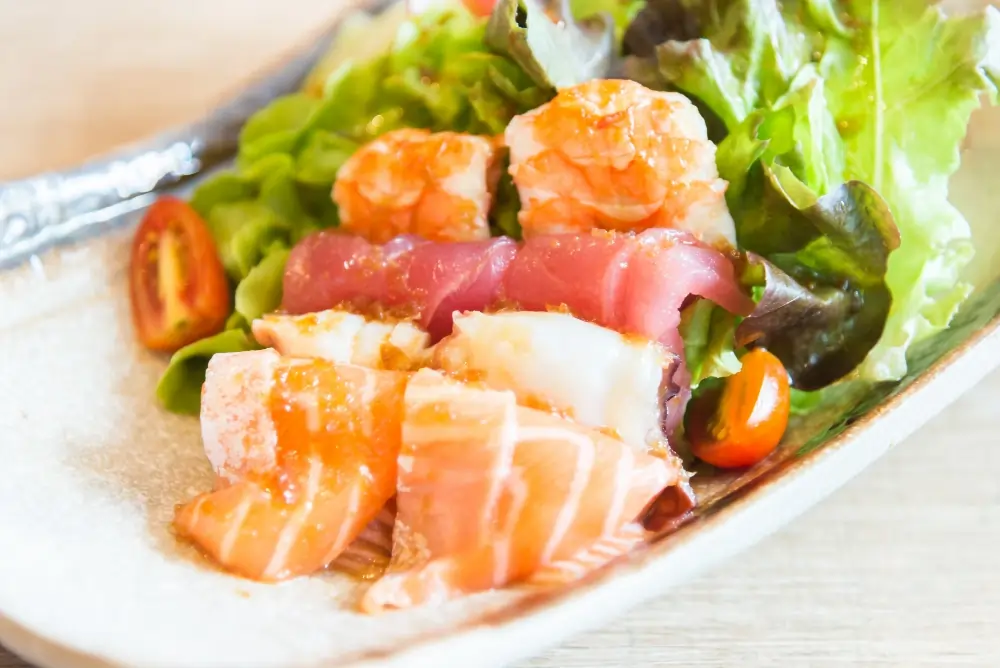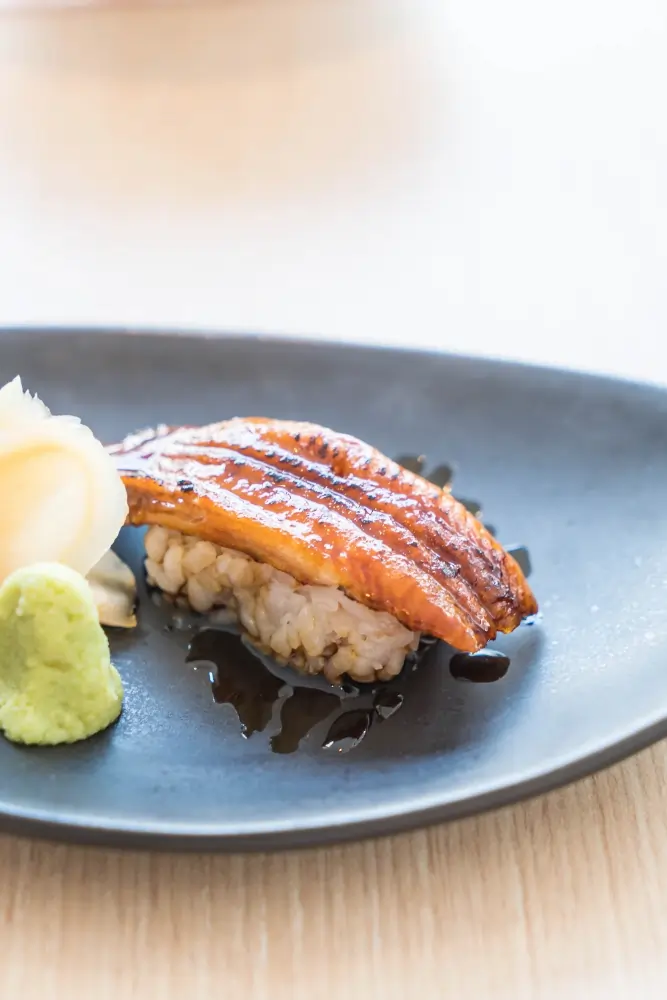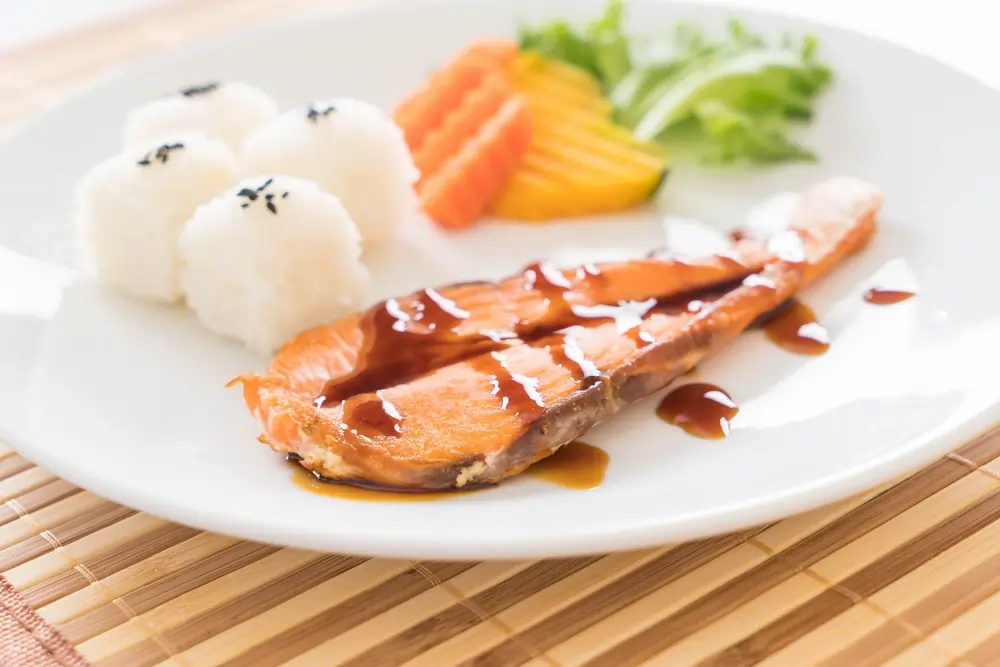Japanese cuisine is globally renowned for its balance of flavors, nutritional benefits, and aesthetic appeal. One of the most cherished breakfast options in Japanese culture is the Japanese Breakfast Salmon, or “Shiozake.” This dish combines the simplicity of salt-cured salmon with the elegance of traditional Japanese accompaniments, making it a delightful and healthy start to the day. In this comprehensive guide, we will explore every detail of this culinary masterpiece—from preparation techniques to serving suggestions.
What is Japanese Breakfast Salmon?
Japanese breakfast salmon, or Shiozake, is a classic dish featuring salmon fillets cured with salt. It is often served as part of a traditional Japanese breakfast, accompanied by rice, miso soup, pickled vegetables, and sometimes a tamagoyaki (rolled omelet). The salmon is lightly grilled, highlighting its natural flavors and creating a tender, flaky texture with a slightly crispy exterior.
The simplicity of this dish allows the quality of the salmon and the curing process to shine, making it both delicious and nutritious.
Key Ingredients for Japanese Breakfast Salmon
To prepare the perfect Japanese breakfast salmon, you will need the following:
- Salmon Fillets: Fresh, high-quality salmon is essential. Opt for wild-caught salmon for the best flavor and nutritional value.
- Salt: Use coarse sea salt or kosher salt for curing the salmon.
- Lemon (Optional): Adds a subtle citrus flavor to complement the richness of the salmon.
- Rice: Japanese short-grain rice, steamed to perfection.
- Miso Soup: Made with dashi stock, miso paste, tofu, and wakame seaweed.
- Pickled Vegetables: Such as tsukemono or umeboshi (pickled plums).
- Tamagoyaki: A sweet and savory rolled omelet.

How to Prepare Japanese Breakfast Salmon
Step 1: Curing the Salmon
- Choose Fresh Salmon: Start with fresh salmon fillets, ensuring they are free from bones and have a vibrant pink hue.
- Rinse and Pat Dry: Rinse the fillets under cold water and pat them dry with paper towels.
- Apply Salt: Generously sprinkle coarse sea salt on both sides of the fillets. Use about 1 teaspoon of salt per 100 grams of salmon.
- Rest the Fillets: Place the salted salmon on a tray lined with parchment paper. Cover with plastic wrap and refrigerate for 6 to 12 hours to allow the salt to penetrate and enhance the flavor.
- Rinse and Dry Again: After curing, rinse off the excess salt and pat the fillets dry. This step ensures the salmon is not overly salty.
Step 2: Grilling the Salmon
- Preheat the Grill: Use a grill or broiler set to medium-high heat.
- Prepare the Salmon: Lightly oil the grill grates or use aluminum foil to prevent sticking. Place the salmon fillets skin-side down.
- Grill to Perfection: Cook for about 4-5 minutes on each side, depending on the thickness of the fillets. The salmon should be golden brown on the outside and tender on the inside.
Serving Suggestions for Japanese Breakfast Salmon
1. Steamed Rice
Japanese short-grain rice is the ideal accompaniment. Its sticky texture pairs perfectly with the tender flakes of salmon. Serve it in a small bowl alongside the salmon.
2. Miso Soup
A bowl of steaming miso soup adds warmth and umami to the meal. The combination of dashi stock, tofu, wakame, and miso paste creates a comforting balance to the dish.
3. Pickled Vegetables
Pickled vegetables such as tsukemono or umeboshi provide a tangy and refreshing contrast to the rich salmon.
4. Tamagoyaki
This sweet and savory rolled omelet is a staple in Japanese breakfasts. Its soft texture and subtle sweetness complement the salty salmon.
5. Nori (Seaweed)
Thin sheets of toasted seaweed can be used to wrap small portions of rice and salmon for added texture and flavor.
Health Benefits of Japanese Breakfast Salmon
1. Rich in Omega-3 Fatty Acids
Salmon is an excellent source of omega-3 fatty acids, which support heart health, reduce inflammation, and promote brain function.
2. High in Protein
A single serving of salmon provides a significant amount of protein, essential for muscle repair and growth.
3. Packed with Essential Nutrients
Salmon is rich in vitamins D and B12, as well as selenium, which supports immune health and bone strength.
4. Balanced Meal
When served with rice, miso soup, and vegetables, Japanese breakfast salmon offers a balanced combination of protein, carbohydrates, and healthy fats, making it an ideal meal to start the day.
Tips for Making the Best Japanese Breakfast Salmon
- Use Fresh Ingredients: The quality of the salmon and accompaniments greatly affects the flavor of the dish.
- Do Not Overcook: Overcooking can dry out the salmon. Aim for a tender and flaky texture.
- Experiment with Sides: While traditional sides are recommended, feel free to incorporate your favorite vegetables or condiments.
- Prepare Ahead: Cure the salmon the night before to save time in the morning.

FAQs
What fish is used for Japanese breakfast?
The most common fish used for Japanese breakfast is salmon, particularly salted and cured salmon known as Shiozake. Other options include mackerel, cod, and horse mackerel, but salmon remains the most popular choice due to its mild flavor, nutritional value, and versatility.
Is eating salmon for breakfast okay?
Yes, eating salmon for breakfast is not only okay but also highly nutritious. Salmon is rich in omega-3 fatty acids, high-quality protein, and essential nutrients like vitamins D and B12. Starting your day with salmon provides sustained energy and supports heart health, brain function, and overall wellness.
What is served for Japanese breakfast?
A traditional Japanese breakfast, known as Asa Gohan, typically includes:
- Grilled fish (Shiozake): Salted salmon or another type of grilled fish.
- Steamed rice: Japanese short-grain rice as a staple.
- Miso soup: A comforting soup made with dashi stock, miso paste, tofu, and seaweed.
- Pickled vegetables: Such as tsukemono or umeboshi (pickled plums).
- Tamagoyaki: A sweet and savory rolled omelet.
- Nori (seaweed): Toasted seaweed sheets for added flavor. This balanced combination of dishes offers a nutritious and satisfying start to the day.
What is breakfast salmon called?
Breakfast salmon in Japanese cuisine is called Shiozake, which translates to “salted salmon.” The salmon is cured with salt to enhance its flavor and preserve it before being grilled or broiled for breakfast.
Conclusion
Japanese breakfast salmon, or Shiozake, is a timeless dish that embodies the elegance and simplicity of Japanese cuisine. Its delicate balance of flavors, nutritional benefits, and visual appeal make it an excellent choice for anyone looking to enjoy a healthy and satisfying breakfast. By following the steps outlined in this guide, you can prepare an authentic Japanese breakfast salmon that rivals even the best restaurants.

